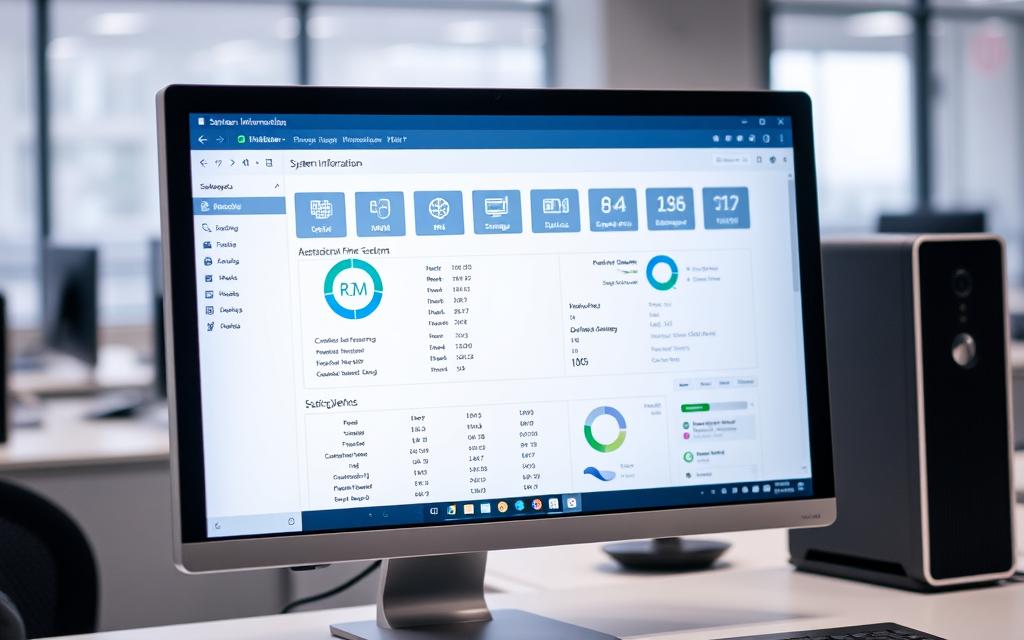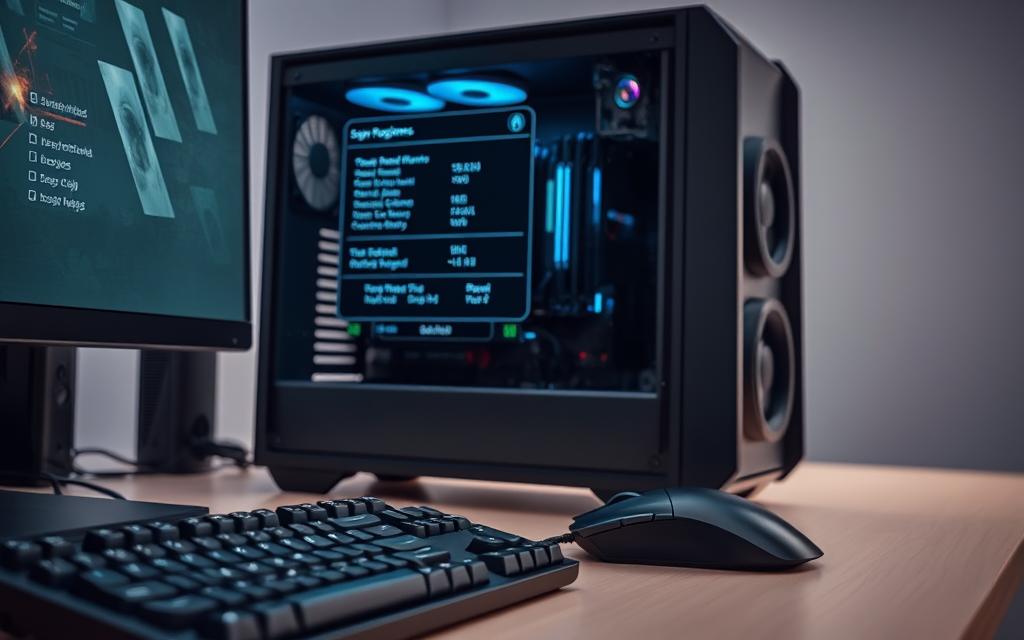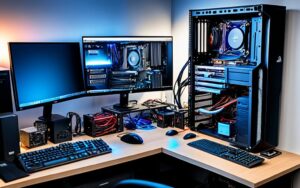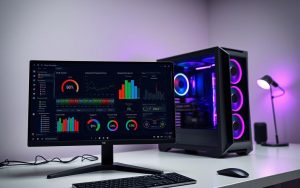Table of Contents
Nothing ruins gaming excitement faster than discovering your computer can’t handle a new title. Many players face crashes, lag, or wasted purchases due to overlooked hardware limitations. Modern games demand specific components for smooth performance.
Checking system requirements prevents frustration. Tools like System Requirements Lab analyze your setup in seconds. Titles like Cyberpunk 2077 or Red Dead Redemption 2 need powerful specs for optimal play.
This guide covers three verification methods: manual checks, automated scans, and launcher assessments. Learn to evaluate both desktops and laptops efficiently. Save time and money while upgrading your gaming experience.
Why Checking System Requirements Matters
Gamers often overlook hardware checks before buying new titles, leading to frustration. Steam reports 70% of refunds stem from inadequate setups. Verifying system requirements ensures smooth gameplay and protects your investment.
Avoid Wasted Purchases and Poor Performance
Ignoring specs has real costs. A $60 game might demand a $300 GPU upgrade. Key risks include:
- Performance drops: Elden Ring needs 12GB RAM for open-world stability.
- Overheating: Underpowered GPUs throttle or fail during intense scenes.
- Storage shocks: Microsoft Flight Simulator requires 150GB space.
Minimum vs. Recommended Specs Explained
Minimum specs deliver 30 FPS at 720p—barely playable. Recommended specs target 60 FPS at 1080p for crisp visuals. For example:
- Cyberpunk 2077 demands an RTX 3080 for ray tracing.
- SSDs cut load times by 50% compared to HDDs in Red Dead Redemption 2.
Balance upgrades with optimizations like NVIDIA DLSS for budget-friendly improvements.
How to Find Your PC’s Specifications
Accurate hardware knowledge prevents compatibility headaches with new game releases. Whether upgrading components or verifying system requirements, these steps reveal critical specs.

Check Your CPU and RAM
Press Ctrl+Shift+Esc to open Task Manager. Navigate to the Performance tab for real-time metrics:
- CPU: Lists model (e.g., Intel Core i7-13700K) and usage.
- RAM: Shows total memory (16GB/32GB) and available slots.
For OEM systems, access BIOS via F2/Del during startup. Dual-channel configurations boost speed by 15%.
Identify Your Graphics Card (GPU)
In Task Manager, select GPU 0 under the Performance tab. Key details include:
- VRAM (8GB+ recommended for 1440p gaming).
- Driver version (update via NVIDIA Control Panel or AMD Adrenalin).
Alternatively, run DxDiag from the Start menu to view dedicated GPU memory and DirectX data.
Verify Your OS and DirectX Version
Type winver in the Windows search bar to check your OS build. Note that Windows 11 requires TPM 2.0 support.
For DirectX:
- Press Win+R, type dxdiag, and hit Enter.
- Under the System tab, confirm DirectX 12 Ultimate for ray tracing support.
Portable tools like CPU-Z offer advanced hardware inventories for power users.
Methods to Compare Your PC Specs with Game Requirements
Modern titles push hardware limits, making spec checks non-negotiable. Whether upgrading or buying new games, these methods ensure your setup delivers the best performance.
Manual Comparison Using Store Listings
Steam and Epic Games Store list minimum and recommended specs under each title. Key steps:
- Decode details: Look for GPU/CPU models (e.g., RTX 3060 or Ryzen 5 5600X).
- Check “Additional Notes”: Some games need DirectX 12 or SSD storage.
- Cross-reference: Use SteamDB for historical requirement changes.
“Store pages often hide critical needs like internet connectivity or launcher dependencies.”
Automated Tools Like “Can You RUN It”
Websites like System Requirements Lab scan your system instantly. Benefits:
- Accuracy: Databases cover 8,500+ titles, including VRAM and API needs.
- Upgrade alerts: Flags outdated drivers or RAM shortages.
For privacy-conscious users, offline software like CPU-Z offers similar checks.
Reading Game Launcher Requirements
Platforms like Battle.net or EA App optimize settings automatically. Pro tips:
- Presets: Launchers often suggest graphics tiers based on your GPU.
- Cloud alternatives: GeForce NOW bypasses local hardware limits.
Community forums like r/pcgaming provide real-world experience reports beyond official specs.
Conclusion: Next Steps for Optimal Performance
Maximizing gaming performance requires strategic upgrades and smart maintenance. Focus on graphics cards first for 4K experiences, then balance with CPU and memory improvements. Regular driver updates and thermal paste replacements keep hardware running smoothly.
For budget-friendly options, explore used GPUs with verified benchmarks. Tools like NVIDIA Inspector fine-tune settings, while SSD upgrades slash load times. Cloud services like Xbox Game Pass offer alternatives for older systems.
Test setups with software like 3DMark before buying new titles. Compare results against community data for real-world experience. Future-proof builds with PCIe 5.0 support where possible.
Combine manual checks with automated scans for full compatibility assurance. This balanced approach saves time and ensures peak performance across all games.
FAQ
Why is checking system requirements important before running a game?
Verifying system requirements ensures compatibility, preventing wasted purchases and poor performance. Games may crash or lag if your hardware doesn’t meet the necessary specifications.
What’s the difference between minimum and recommended specs?
Minimum specs allow the game to run at basic settings, while recommended specs ensure smoother performance with higher graphics quality. For optimal experience, aim for recommended hardware.
How do I check my computer’s CPU and RAM?
Open Task Manager (Ctrl+Shift+Esc), navigate to the Performance tab, and view details under CPU and Memory. Alternatively, use System Information for a full breakdown.
How can I identify my graphics card (GPU)?
Press Win+R, type dxdiag, and check the Display tab. Your GPU model and driver version will be listed. NVIDIA or AMD software also provides this information.
What’s the easiest way to compare my PC specs with game requirements?
Use automated tools like Can You RUN It or manually compare your hardware with the game’s listed specifications on stores like Steam or Epic Games.
Where do I find a game’s system requirements?
Requirements are listed on official store pages (Steam, Epic), developer websites, or the game’s physical box. Launchers like Battle.net or Origin also display them.
Can outdated drivers affect game performance?
Yes. Old GPU drivers may cause crashes or reduced performance. Update them via NVIDIA GeForce Experience, AMD Adrenalin, or Windows Update for Intel graphics.
What if my PC barely meets the minimum requirements?
Lower in-game settings (resolution, textures) and close background apps. However, expect potential lag or instability if hardware is underpowered.









